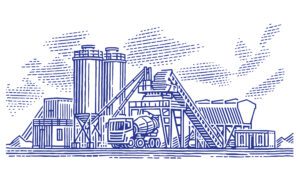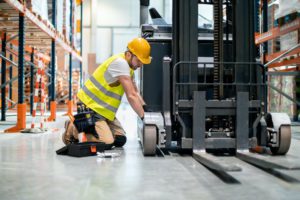As Companies Re-Open, Optimize Operations While Keeping Workers Safe
Updated May 19, 2020
A version of this article was originally published in IndustryWeek
I have been speaking daily with global industrial CEOs whose business operations – and lives – have been changed drastically by the COVID-19 (novel coronavirus) outbreak. Many of these companies are making essential products, particularly in the food, beverage, packaging and consumer-hygiene industries.
As the world begins to emerge from sheltering in place, employees are returning to very different work sites, with increased safety precautions that are drastically changing the way work normally gets done. Production lines also are changing to meet new output requirements, requiring a whole new level of efficiency and, with it, more operational visibility; according to the Consumer Brands Association (CBA), members have seen an increase in CPG orders by as much as 700% as consumers stock up for the long haul.
We know their efforts are making a big difference. We also know that production floors don’t run on their own. For all the predictions of automation taking over industrial jobs, robots aren’t saving us now. Instead, thousands of frontline industrial workers carry out vital roles every day to ensure much-needed products make it onto our store shelves, into our pantries, and more.
This is a critical time for these workers, too, and rightly they also have high demands: first and foremost that their employer keep them safe and healthy throughout this outbreak and in the foreseeable future. And it’s never been more clear that modern digital tools for industrial workers play a vital role.
(Parsable is helping global industrial companies re-open safely and efficiently, at scale; learn how)
Before I go further, I am encouraged that every industrial CEO I speak with shares the same high regard for worker health and safety, as well as product safety. These leaders are faced with a unique set of challenges: many are changing gears to make new, essential products that require different, reconfigured production lines. All companies must not only adapt to meet new employee health and safety requirements, but need additional assurances against product cross-contamination when shifts and responsibilities are constantly changing.
But across the industry, the top priority right now is tackling the same challenge: “How do I keep my employees healthy and safe and my operations productive?”
Companies quickly adapting to this pandemic are using technology to roll out new standard operating procedures (SOPs) across multiple shifts and sites, ensuring those standards are adhered to, knowing they can readily make changes as the situation evolves.
Let’s drill down to some specific examples. Right now, shift handovers and collaboration must require people to stay at least six feet apart, even when factories are operating at full capacity. Site entry and visitor compliance just got a whole lot stricter, such as checks for potential COVID-19 symptoms and mandated hand-washing by anyone who enters a facility. Workers might be moving to a whole new production line from one shift to the next as companies produce whatever is in demand.
Some great examples I’ve seen of new SOPs implemented in response to emerging challenges include safety checks integrated within employees’ workflows – from sending reminders to workers to wash their hands, wearing a mask when operating in certain areas, or making them watch a training video to operate a piece of machinery they are not familiar with in the plant.
(Connected Worker® by Parsable can be deployed 100% remotely; connect to find out how)
Of course, being able to validate safety checks is more complicated now that most states and counties are mandating that non-essential workers work from home. A manager can no longer walk around the factory floor to check employee compliance for themselves. Thus, remote office safety checks have become our new norm.
In these instances, some industrial companies are relying on the collection of worker data and analytics dashboards to validate and analyze compliance with safety checks in real-time, or spot any deviations that need to be addressed early on.
By this, I mean managers can send an alert to a frontline worker with rich, guided instructions – think inline videos, photos, GIFs and PDFs – on how to safely resolve the situation, and collaborate with them remotely for training.
Lastly, companies need to be able to easily make additional changes to operating procedures at top speed. Just look at the significant changes that are happening week to week, hour to hour right now.
Again, speed, flexibility and scalability are key to getting the right information to the right people at the right time.
I’m humbled by the incredible work being done across the industry to help keep our society running. I am also warmed to see how so many companies are consciously seeking solutions and making good choices to protect the health and safety of workers still required onsite. While these are undoubtedly tough times, our industry has a lot to be proud of right now.
As companies resume operations, modern technology can help them ramp up production, scale efficiently and ensure worker safety. Get in touch with our team to learn how Parsable can be deployed remotely and quickly at your factories today.






